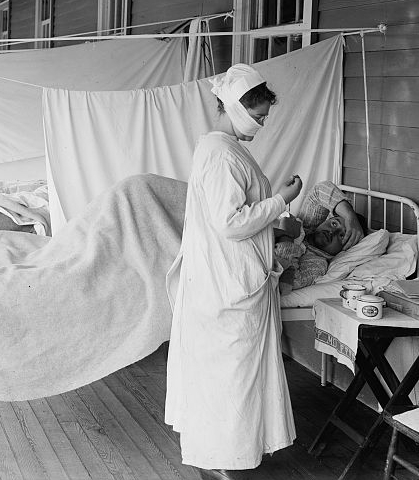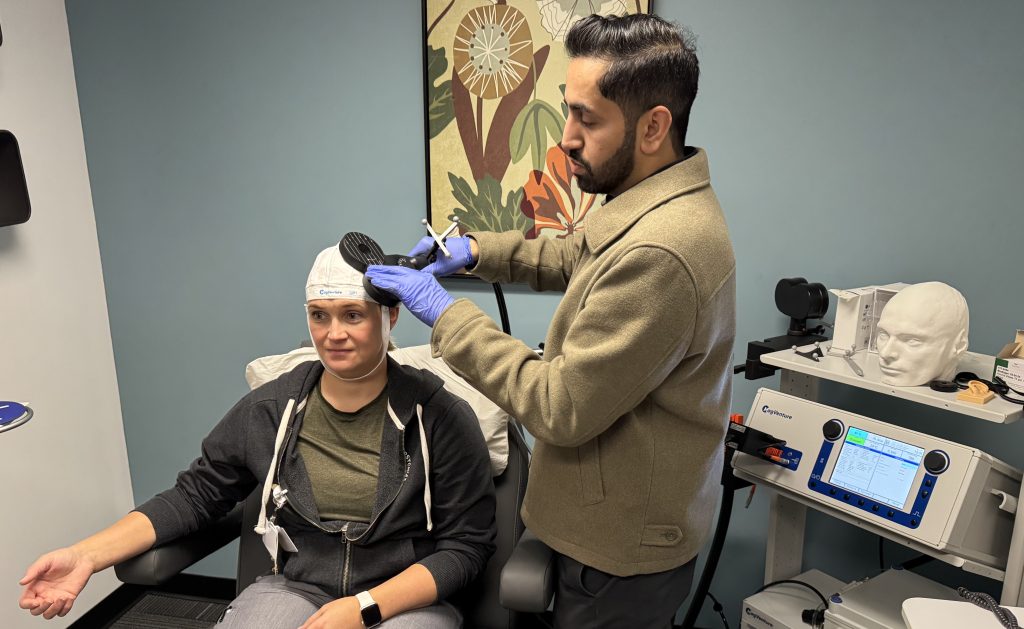That happened a century ago. Because of the inadequacy of the existing Sacramento hospitals to care for the numerous victims of the Spanish flu in 1918, local doctors and civic leaders banded together to build a new, more modern hospital to meet the growing city’s needs.
Sutter Health was born.
Begun as a single Sutter Hospital kitty-corner to Sutter’s Fort, Sutter Health now has a presence in 22 counties across Northern California, featuring thousands of doctors and allied clinical providers and more than 50,000 employees. As an integrated health system, Sutter is uniquely qualified and capable to care for residents during a health crisis such as COVID-19.
“A group of hospitals and doctor’s offices are able to band together, share resources, skills and knowledge, and institute best practices to care more effectively and efficiently for our patients and the communities we serve,” said Rachael McKinney, CEO of Sutter Medical Center, Sacramento and president of Sutter’s Sacramento market. “We have systems in place that we test all the time to ensure we are prepared for many crises, including a pandemic.”

Physicians Fill a Need in Sacramento
The deadly influenza commonly called Spanish flu killed about 50 million worldwide. From August 1918 to July 1919, 20 million Americans became sick and more than 500,000 died, 13,340 of them in California. In Sacramento, slow action by the city public health office delayed care and, within a couple of weeks, sick residents flooded the hospitals. The city library was even converted into a makeshift hospital. A Sutter Medical Center, Sacramento history recounts:
“The influenza epidemic of 1918 gave convincing evidence to Sacramento doctors that the city’s two major hospitals were woefully inadequate to provide the health care services vital to the rapidly growing community. The flu epidemic had sorely taxed these facilities and highlighted the need for a modern, fireproof hospital. Recognizing the critical need for hospital care for their patients, 17 local physicians came together with civic leaders to create a new hospital.”
The group incorporated as Sutter Hospital Association in 1921, naming it after its neighbor, Sutter’s Fort, which cared for Gold Rush pioneers as Sacramento’s first hospital. The first Sutter Hospital was built two years later and opened in December 1923 as “the most modern hospital to be found in the state,” according to The Sacramento Bee. It was the first private, non-sectarian hospital in the city, and the first to offer private rooms.
The hospital became not-for-profit in 1935 and changed its name to Sutter General Hospital. It opened Sutter Maternity Hospital in 1937 two miles away and it soon expanded its services and was renamed Sutter Memorial Hospital. In the 1980s, the old Sutter General Hospital was replaced by a modern facility across the street from Sutter’s Fort, and in 2015 all adult and pediatric services were combined under one roof when the Anderson Lucchetti Women’s and Children’s Center opened essentially in the same location as the original Sutter Hospital.

A Health Network Grows
The 1980s and 1990s saw tremendous growth for Sutter. Struggling community hospitals in Roseville, Auburn, Jackson, Davis, Modesto and other nearby cities merged with what was then known as Sutter Community Hospitals. Then came the deal that more than doubled the healthcare system. In 1996, Sutter Community Hospitals merged with a group of Bay Area hospitals and physician groups known as California Healthcare System. These included such large, well-respected, historic hospitals as California Pacific Medical Center in San Francisco and Alta Bates in the East Bay. This new system became, simply, Sutter Health.
Now as a model of healthcare integration, Sutter Health provides a user-friendly system centered around patient care — a system that offers greater access to quality healthcare while holding the line on costs. This connectivity allows Sutter teams to provide innovative, high-quality and life-saving care to more than 3 million Californians. Sutter’s integrated care model allows care teams and care locations to use the power of the network to share ideas, technologies and best practices, ultimately providing better care and a user-friendly experience, achieving healthier patient outcomes and reducing costs.

Sutter Is Now an Integrated Network
Today, Sutter Health’s hospitals and physician groups don’t operate in a vacuum. Each hospital is supported by a larger system that can share knowledge and send materials, equipment and even manpower to where they are needed most. The system is called the Sutter Health Emergency Management System, which is organized after the federal government’s National Incident Command System.
Here’s how it works: Part of the Sutter Health Emergency Management System is a team throughout the network that works on gathering and purchasing the necessary supplies and equipment needed during health crises. Another team monitors bed space to ensure that each hospital can care for a patient surge. Clinical team members across the network work together to address any issues that may unfold and to share best practices as they treat patients.
That’s the power of a not-for-profit, integrated healthcare network.
“We leverage the strength of our united teams to increase our capacity and knowledge, and to provide the necessary equipment,” McKinney said. “We are preparing all of our network hospitals in the event we see a surge in patients due to any health crisis. Thanks to the integrated system that has been more than 100 years in the making, we were better prepared for the COVID pandemic and can handle health emergencies safely and effectively.”





